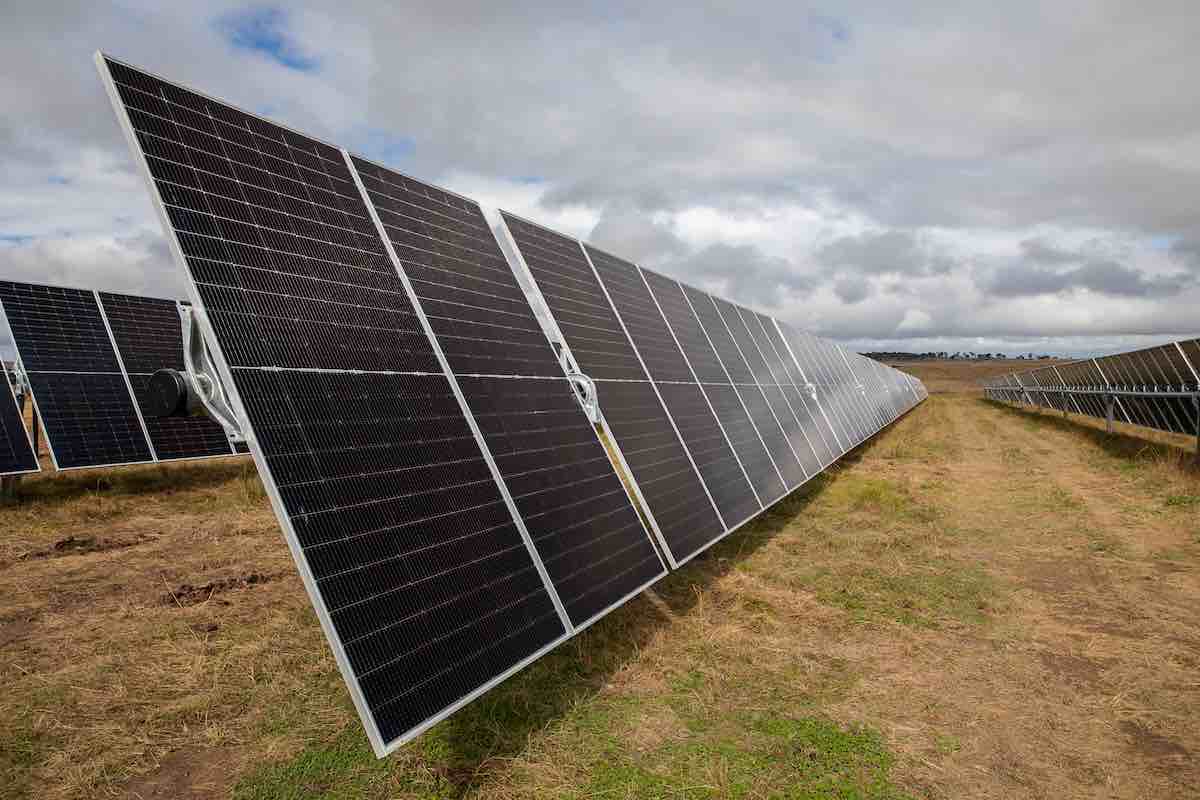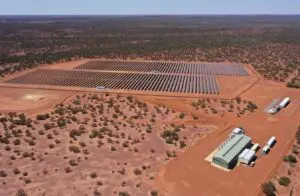A solar farm proposed for central Queensland’s Calliope renewable energy zone has found itself the subject of some bizarre news reports this week, claiming that “contaminated run-off” from the project could threaten the Great Barrier Reef.
The reports originate from a farmer who called in to Sydney’s 2GB radio on Tuesday to air his opposition to the Upper Calliope solar farm, a project proposed near his 12,500 acre cattle grazing property in Queensland’s Gladstone region.
The farmer says he and his neighbours don’t want the the proposed 1.3GW solar project to be built over 2,700 hectares (or roughly 6,600 acres) on their patch.
He also claims it will devalue his 12,500 acre property by 30 per cent, and suggests that the company behind the project, Danish-based global outfit European Energy, is not open to consultations.
“That’s basically it, mate, suffer in your jocks,” he told 2GB’s Ben Fordham.
“It’s destroying us, destroying our family, destroying the district, it’s a beautiful little valley.”
The farmer also airs environmental concerns around the project, telling the radio audience he is worried that rivers near the solar farm could deliver “contaminated run-off straight into the Great Barrier Reef,” to quote the News Ltd report.
“(There’s) complete disregard for the reef and the people it destroys.”
Cue the Murdoch media fodder: Exclusive: Biggest ever solar farm to be built near Great Barrier Reef
The project, as currently proposed in the very early stages of development, is indeed big – although half the size of the farmer’s property. According to the project website, one-third of the 2,700ha would be taken up by solar panels, while the other two-thirds could continue to be grazed.
Whether 1.3GW is too big and whether it is proposed for the right place remains to be determined through the consultation and planning processes.
It is, however, within the ballpark of the “1,500-2,000MW of expected installed generation” the Palaszczuk government has earmarked for in the Calliope Renewable Energy Zone, to help power the industrious Gladstone region.
As European Energy says, in an emailed response to News Ltd (which News Ltd is yet to add to its story):
“The project is 50km south-west of Gladstone adjacent to existing electricity transmission corridors. Gladstone is one of Australia’s most important industrial hubs.
“The electricity that the solar farm provides will be able to fuel the economic growth that the region will experience in the upcoming years.”
European Energy also says:
“The Upper Calliope Solar Farm is proposed on land that has previously been cleared for grazing and the low population density in the area has allowed us to have direct engagement with every neighbouring landholder.
“The development application is currently being prepared by our team of specialist experts which will ensure the highest environmental standards are met.
“We have had generally positive feedback and hope to address any remaining concerns as we continue to progress the project.”
But why bother with all that when you can run with the Great Barrier Reef angle? After all, it fits perfectly with a favourite anti-renewables trope, that wind and solar farms are destroying the very environment they purport to serve.
“A major new solar farm, covering 2700ha, has sparked environmental concerns among local farmers who say it will be built just 70km from the Great Barrier Reef,” the News Ltd story reports.
Setting aside the “just 70km” bit, this is a particularly bizarre claim to make in the context of Gladstone.
This is the same Gladstone that is home to the world’s fourth largest coal exporting terminal, and where dredging to accommodate new gas processing plants on nearby Curtis Island has caused global controversy for its impact on marine life, including the nearby Great Barrier Reef.
It is the same region that hosts the hugely emissions-intensive Yarwun alumina refinery – the facility whose total value was written off this year by its owner Rio Tinto, after its call for developers to come forward with new renewable projects to help supply its Gladstone assets came up with nothing.
It is the same Gladstone that a 2022 local government commissioned report found stood to be “particularly vulnerable” to the exit of coal from the energy system, due to its current reliance on coal-fired power industries, including the Callide B Power Station.
As for the Great Barrier Reef, this is the same World Heritage-listed wonder of the natural world that this year once again narrowly escaped being placed on UNESCO’s “In Danger” list, due to the ongoing “serious threat” from climate change and pollution.
This is the same Great Barrier Reef that is reeling from four mass coral bleaching events in just seven years, that have reduced its shallow water reefs by as much as 50%, and which faces the “fight of its life” against “climate change-related threats and …damage from ports and fisheries.” No mention of solar farm run-off from UNESCO.
“To give the reef a fighting chance, it’s vital [they] implement ambitious emissions reduction measures consistent with limiting warming to 1.5°C,” says WWF-Australia head of oceans Richard Leck.
Transitioning our energy supplies to renewable sources like solar will be a massive part of this, particularly for regions like Gladstone.
European Energy says that for its proposed Upper Calliope solar project, “the development application is currently being prepared by our team of specialist experts which will ensure the highest environmental standards are met.”
See below for European Energy’s statement in full:
Upper Calliope Solar Farm is a massive project that will have a capacity of approximately 1,300 MW which is enough to power the equivalent of half a million homes. The project is 50km south-west of Gladstone adjacent to existing electricity transmission corridors. Gladstone is one of Australia’s most important industrial hubs. The electricity that the solar farm provides will be able to fuel the economic growth that the region will experience in the upcoming years. This is done utilizing cost-effective and renewable energy from the sun.
We are committed to maximising the benefits of the project for the local community. Opportunities will be given for local contractors to supply goods and services, particularly during project construction. Over $1m in grant funding will be available to local organisations during project operation. Rates and rent will be paid to the Gladstone Regional Council and local landowners respectively during the life of the project.
We are focused on engaging with project neighbours and minimising any impacts of our projects on the local environment. We have a more than a decade-long track record of developing solar farms in a variety of environments.
The Upper Calliope Solar Farm is proposed on land that has previously been cleared for grazing and the low population density in the area has allowed us to have direct engagement with every neighbouring landholder. We have had generally positive feedback and hope to address any remaining concerns as we continue to progress the project. The development application is currently being prepared by our team of specialist experts which will ensure the highest environmental standards are met.










